Recent Articles
Popular Makes
Body Types
10 Cars with the Best Suspension
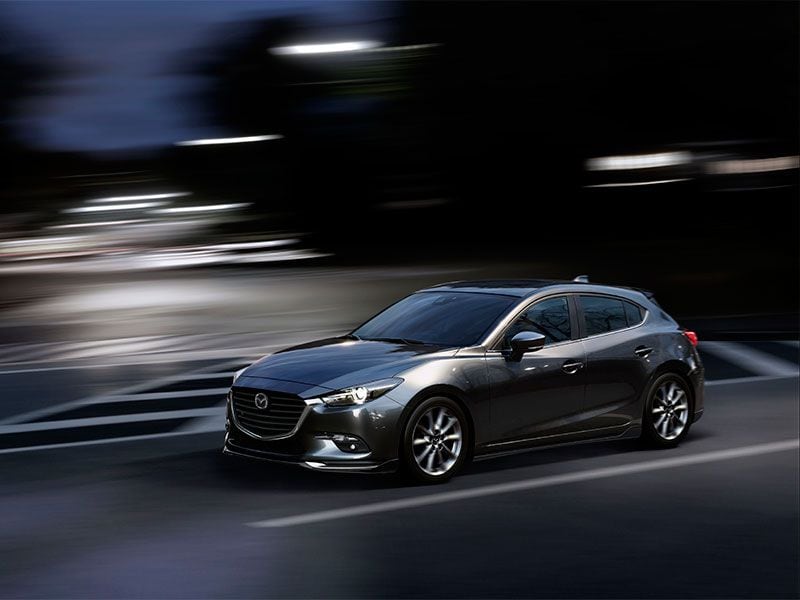
2017 Mazda Mazda3 exterior on road ・ Photo by Mazda
When I set out to pen an article listing 10 vehicles with the best suspension systems, I had to stop and think for a moment. I’ll freely admit, the full magnitude of the task didn’t set in until after I accepted it. Suspension systems are somewhat subjective and endlessly debatable. I sat back and thought about the hundreds of vehicles I’ve test driven over the past eight years or so and decided that in order to do this right, the list would need to be devoid of supercars. I’d stick largely to vehicles that I’d actually driven. There would be nary a Lamborghini, Bugatti, Ferrari, Rolls Royce, or even a Porsche. So here, in my opinion, are the top mass market cars with the best suspension.
Mazda Mazda3
The Mazda Mazda3 delivers agile handling with a supple ride and is widely acclaimed as the best handling front-wheel-drive compact under $20,000. The 4-wheel independent suspension system uses MacPherson struts up front and a multilink rear, with stabilizer bars fore and aft. The Mazda3 is equipped with power rack-and-pinion steering with a variable assist and electronic power assist steering. The turning circle diameter is 37.1 feet, curb-to-curb. 4-wheel disc brakes are standard, with 11.02-inch vented discs up front and 10.43-inch solid discs in the rear. It’s offered as a 4-door sedan and 5-door hatchback, with five levels of trim: i Sport, i Touring, i Grand Touring, s Touring, and s Grand Touring.
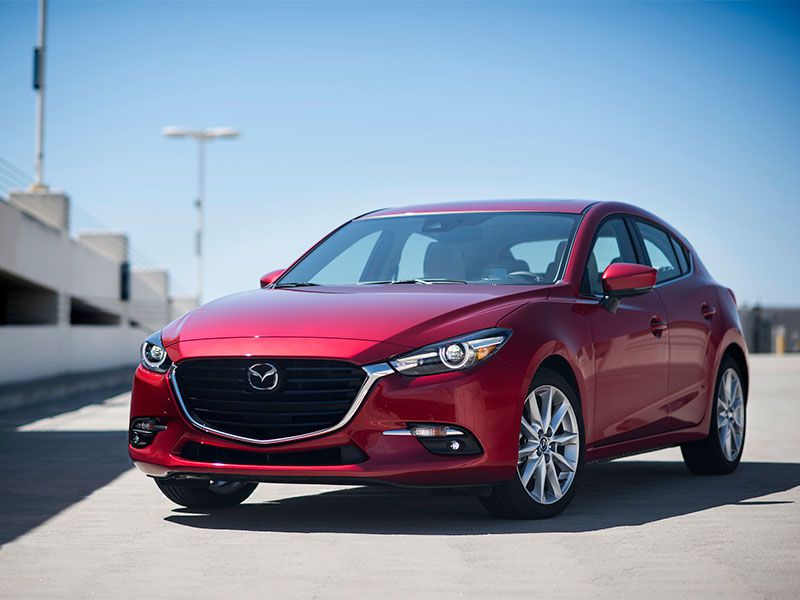
Photo by Mazda
Ram 1500
The RAM 1500 has the best ride of the current flock of half-ton trucks, hands down, with a suspension system that uses coils at each corner to deliver a plush experience. The optional class-exclusive air suspension system automatically lowers the suspension at highway speeds to optimize fuel economy and when you need to tackle the tough stuff, the air suspension can be raised to two off-road heights (adding 1.2 or 2 inches). Raising the suspension increases the approach, departure, and ramp break-over angles. The suspension can be dropped low to ease passenger entry and exit, as well.

Photo by Fiat Chrysler Automobiles
Jaguar F-Type
I’ve only taken one lap around a road course in the Jaguar F-TYPE at a media event. But that one lap was all that it took. Needless to say, the F-Type handles brilliantly. I was still buzzing the week after when I made the mistake of wearing a Jaguar cap (absconded from the event) while shopping at Trader Joe’s. One of the employees took note of the cap and looked me square in the eye, with a goofy grin. I shrugged my shoulders and asked him, “What’s up?” He uttered three syllables, with glee. “Jag. You. Are … “ I had to explain sheepishly that I didn’t have a Jag parked out in the lot, that all I owned was the cap. Then I fetched my box of maple leaf cookies and sulked to the checkout. I was so depressed I ate half the box of cookies on the way home.
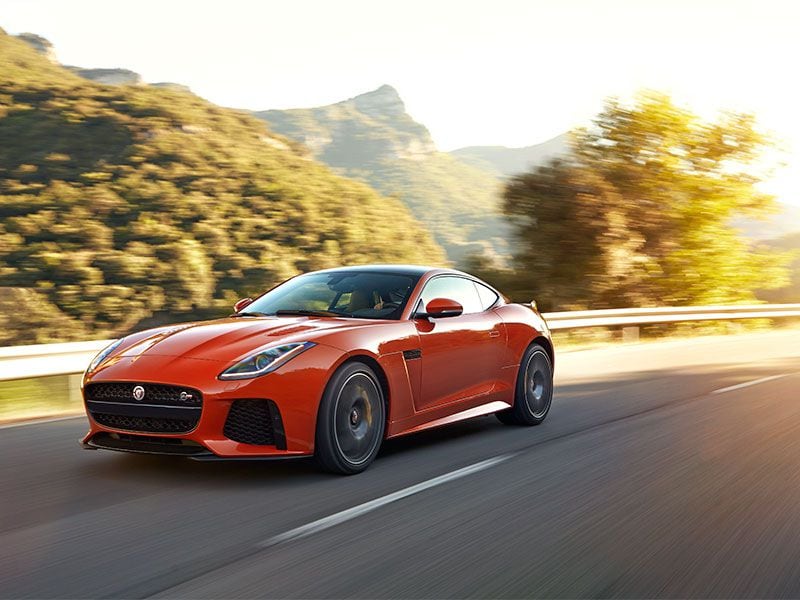
Photo by Jaguar Land Rover
Subaru Crosstrek
Need all-wheel drive with a bit of ground clearance and off-road capability, but can’t justify a body-on-frame truck? While there’s no end to the number of small all-wheel drive crossovers these days, most are best suited for snowy roads, not off-road trails. The Crosstrek provides 8.7 inches of ground clearance with a 4-wheel independent suspension system that uses MacPherson struts and a stabilizer bar up front, along with a double wishbone arrangement and stabilizer bar in the rear. The Crosstrek’s turning circle diameter is 34.8 feet, curb-to-curb. Four-wheel disc brakes are standard, with 11.6-inch vented discs up front and 10.8-inch solid discs in the rear. The Crosstrek is only offered in all-wheel drive.
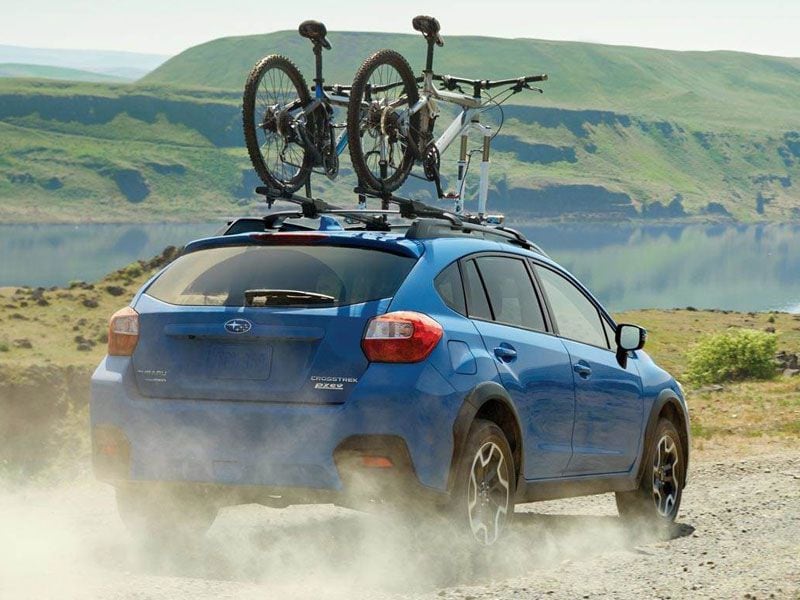
Photo by Subaru
Chevrolet Camaro
The current generation Chevrolet Camaro is the best handling Camaro ever built. It may still seem like you’re looking out the side of a tank when you ride in it, but when you get behind the wheel and head down a twisty road, all is forgiven. Traditional American muscle cars are a rare breed these days and the Camaro SS gets the job done with a new lighter platform and optional magnetic ride control. MacPherson struts are used up front and an independent 5-link setup is used at the rear, with stabilizer bars, front and rear. Steering is handled by a ZF rack-mounted electric unit. The Camaro rides on the same platform as the positively splendid Cadillac ATS-V. If you love the Camaro, but need four doors, the ATS-V is the E-Ticket.
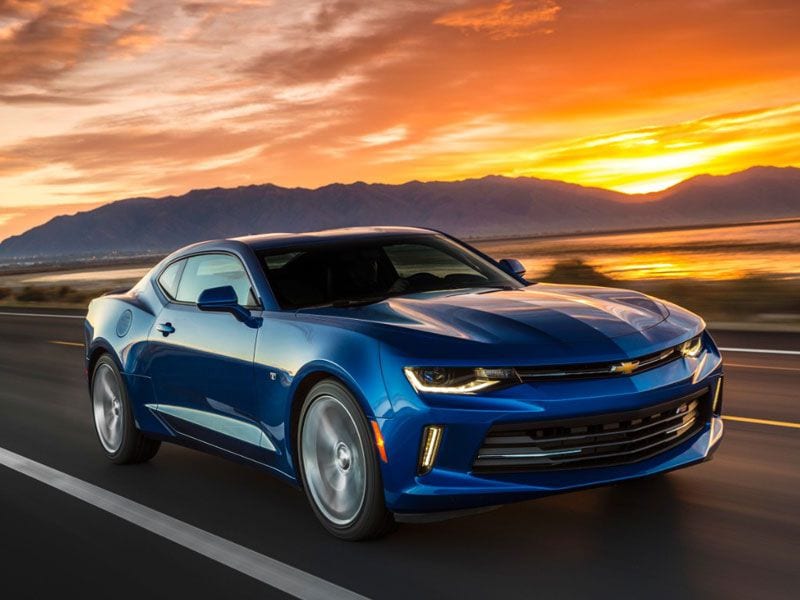
Photo by General Motors
Alfa Romeo Giulia
I love nimble sedans. While I have not had the opportunity to test the Alfa Romeo Giulia yet, there’s no car that I’m more eager to drive. The Audi A4, BMW 3 Series, and Mercedes C-Class are begging for competition and Alfa is ready to go toe-to-toe. Case-in-point: the top-of-range Giulia Quadrifoglio recently set a blistering 7-minute 32-second lap record at Germany’s infamous Nürburgring circuit. The Giulia is equipped with a double wishbone front suspension system and a 4-and-a-half-arm multilink system in the rear. The Giulia's suspension modes are dialed in via the Alfa DNA selector while the system actively responds to driving conditions.
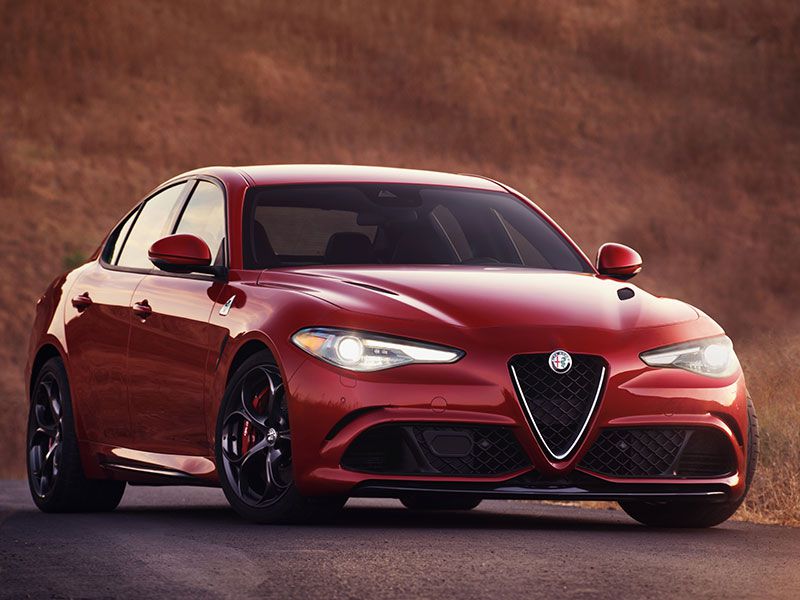
Photo by Fiat Chrylser Automobiles
Mazda CX-9
While I drive more than my share of SUVs and crossovers, I’ll readily admit that I’m not an SUV guy. I enjoy vehicles that carve through the turns rather than wallow. That’s why I really dig the new Mazda CX-9. It delivers the best combination of ride and handling of all non-luxury brand 3-row crossovers. The CX-9’s 4-wheel independent suspension system uses MacPherson struts in front and a multilink rear, with stabilizer bars. The power rack-and-pinion steering features variable assist and electronic power assist steering. The turning circle diameter is 38.8 feet, curb-to-curb. 4-wheel disc brakes are standard, with 12.6-inch vented discs up front and 12.8-inch solid discs in the rear.
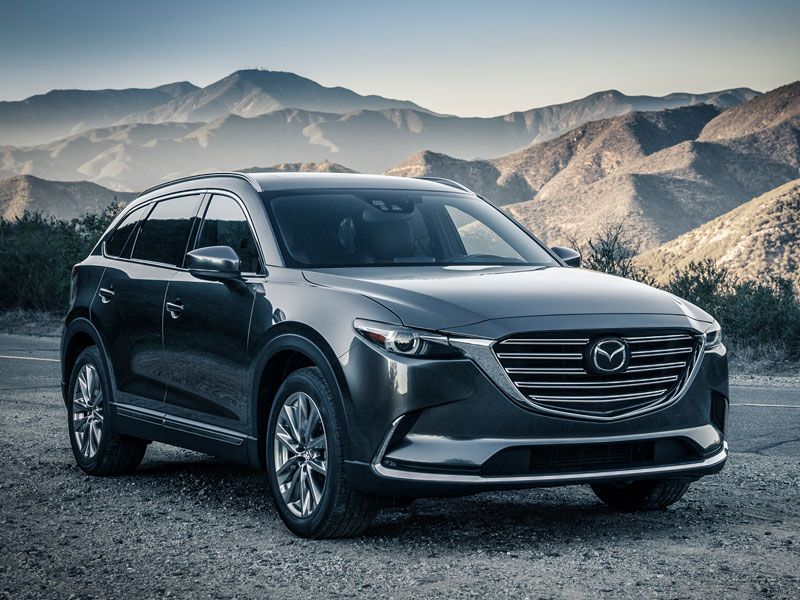
Photo by Mazda
Chevrolet Colorado
The GMC Canyon and Chevrolet Colorado are the cream of the midsize pickup crop. The Canyon and Colorado’s highly fuel-efficient optional Duramax turbodiesel engine may be their trump card, but it’s their superior suspension systems that set them up for the win. These are sweet riding trucks. Coilover shocks are used up front, with multi-leaf springs in the rear. Twin-tube shocks are used all around, as are disc brakes, with 12.2-inch rotors in the front and 12.75-inch rotors in the rear. The steering system is an electrically-assisted power rack-and-pinion unit with variable assist. The Crew Cab with a 5’2” box has a turning circle diameter of 41.3 feet, curb-to-curb.
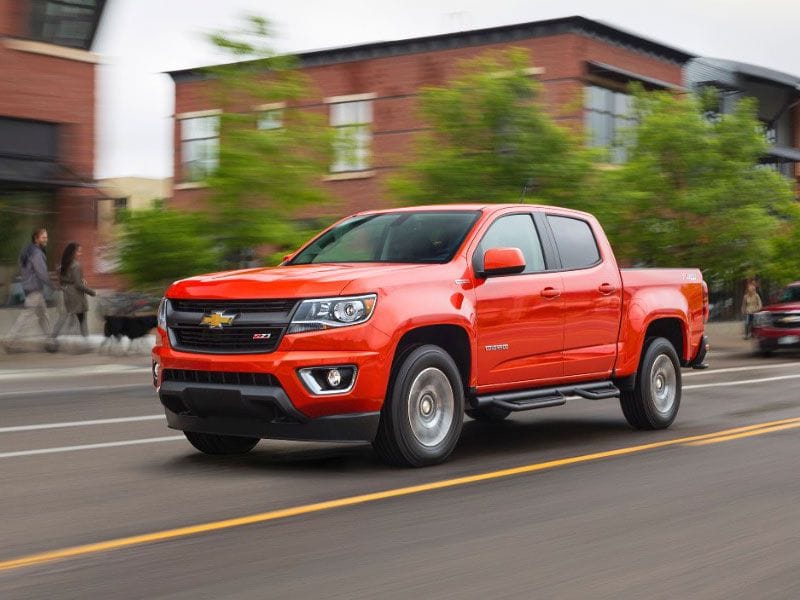
Photo by Chevrolet
Jeep Wrangler
The Jeep Wrangler is the most capable priced off-road vehicle in America. But as superb as the Wrangler is off-road, it can be grueling to drive at highway speeds over long distances. You should buy it because you intend to take it off-road, not because you need a fashion accessory. The Wrangler uses a live axle, link coil suspension system with leading arms in the front and trailing arms in the rear. Dana axles are used fore and aft, with a Dana 30 standard up front in all models, except for the Rubicon, which is equipped with a Dana 44. All Wranglers use Dana 44 axles in the rear. The Rubicon is also fitted with an electronic sway-bar disconnect system. The Wrangler’s turning circle diameter is 34.6 feet, curb-to-curb. Four-wheel disc brakes are standard, with 11.96-inch vented discs all around.
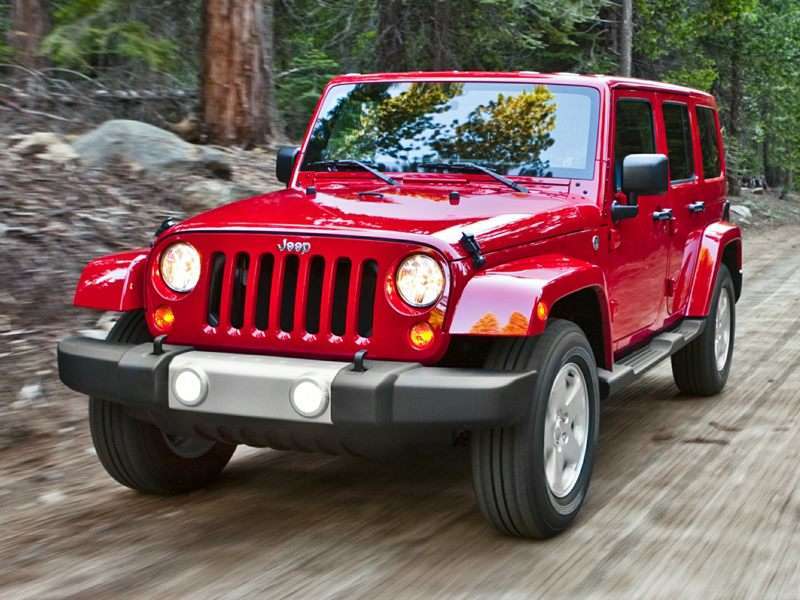
Photo by Fiat Chrysler Automobiles
Audi RS7
Folks ask over and over, “So what’s the fastest car you’ve ever driven?" I never hesitate to reply that it was the Audi RS7, which has a speed-limited top end somewhere in the neighborhood of 180 miles per hour. I can’t tell you exactly how fast I was going nor the exact location. I can only tell you that desert mirages are indeed a thing and that the RS7 at speed feels like it’s going half as fast as indicated on the speedometer. I may never get to drive an RS7 that fast again, but I’ll always remember the day that I did. The RS7 uses a 5-link suspension with a stabilizer bar up front and a trapezoidal-link rear. An air suspension system is standard and a sport suspension system with dynamic ride control is optional.
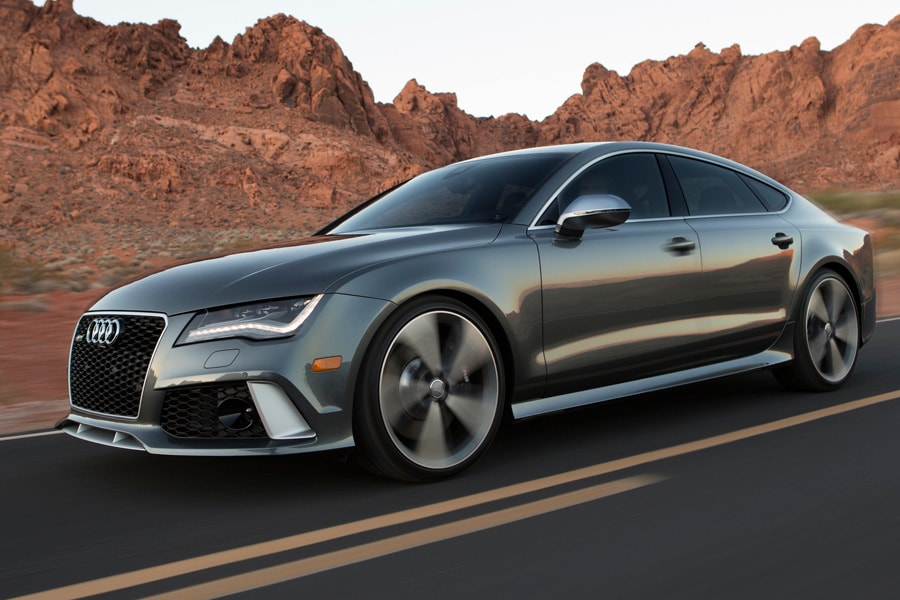
Photo by Audi